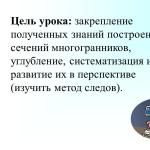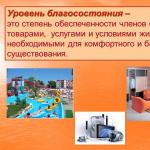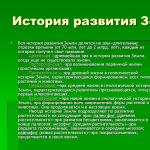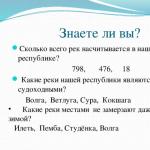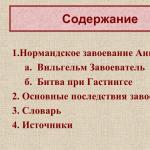Неизвестный Леонардо да Винчи. Краткая биография леонардо да винчи на английском языке
Leonardo da Vinci
Everyone agrees that Leonardo da Vinci (1452-1519) was one of the greatest of all painters. His painting “The Last Supper” is probably the. most famous painting in the world. But Leonardo would be famous if he had never painted a stroke. For he was also a great inventor. He invented the wheelbarrow, the military tank, and roller bearings. He made plans for dozens of weapons and machines. He even experimented with airplane and submarine modes.
Besides, Leonardo was great as a scientist and engineer. He was also a poet, a musician, and a sculptor. Perhaps no other person in history has ever learned so much in a lifetime. Certainly no one ever deserved more to be called a genius.
Leonardo was born in the village of Vinci in Italy. As a small boy he lived most of the time with his fathers parents. Leonardo was a beautiful boy, with curly hair and bright blue eyes.
When his father found out that the boy was interested in painting, he sent him to an excellent painter and teacher. One day Leonardo painted a beautiful angel in one of his teacher’s pictures. “You are a greater painter than Г, said the teacher, “I will paint no more”
In a few years Leonardo’s father decided that he would pay no more to the teacher. His son, he thought, was spending too much time studying rocks and plants, watching birds to find out how their bodies work, and building models of machines. But Leonardo stayed on as his teachers helper. He stayed till he was nearly 25. Then he set out to paint for himself, first in Florence, then in Milan and Venice, and at the end of his life in France.
Leonardo had ideas that other painters liked to copy. “Let them” he said, “I will originate. They can copy”.
Thus great painter left behind only a few paintings, he had many ideas for pictures and made many wonderful pen and ink sketches. But he had so many other interests that he found it hard to sit and paint for hours at a time.
Some of his paintings have been lost because he liked to experiment. He used colours mixed with wax to paint a wonderful mural of a cavalry battle, but the wax melted and the picture was ruined.
“The Last Supper” is on the wall of a chapel in Milan. This picture was famous long before it was finished.
There is such beauty in Leonardo’s paintings that they are as hard to describe as beautiful music. The faces of his people are full of expression. He used light and shade in a new way to make people look very lifelike.
One of Leonardo’s paintings is called “Mona Liza”. It is the picture of a woman with a faint smile on her face. The painting was ordered by the woman’s husband. But Leonardo liked it so much that he kept it for himself. He took it to France with him when he went to spend the last years of his life as a court painter to the king of France. Now it is one of the greatest treasures of the Louvre in Paris.
Леонардо да Винчи
Никто не станет спорить, что Леонардо да Винчи (1452-1519) – один из величайших художников. Его “Тайная вечеря” – одна из самых известных картин в мире. Но Леонардо стал бы знаменитым, даже если бы ничего не нарисовал. Ведь он был и великим изобретателем. Он изобрел ручную тележку, военный танк и роликовые подшипники. Он спроектировал многие виды оружия и механизмов. Он также проводил эксперименты с моделями аэропланов и подводных лодок.
Кроме того, Леонардо был великим ученым и конструктором. А еще он был поэтом, музыкантом и скульптором. Наверно, больше никому в истории человечества не удавалось научиться стольким вещам за свою жизнь. Конечно же, Леонардо да Винчи можно по праву назвать гением.
Леонардо родился в селении Винчи в Италии. Большую часть своего детства он провел с родителями отца. Леонардо был красивым мальчиком с кудрявыми волосами и голубыми глазами.
Когда его отец заметил, что мальчик интересуется рисованием, он отправил его к замечательному художнику и учителю. Однажды Леонардо нарисовал прекрасного ангела на картине своего учителя. “Ты – более великий художник, чем я, – сказал учитель, – я не буду больше рисовать”.
Спустя какое-то время отец Леонардо решил, что не будет больше платить учителю. Он считал, что его сын проводит слишком много времени, изучая камни и растения, наблюдая за птицами, пытаясь выяснить, как устроено их тело, и создавая модели механизмов. Но Леонардо остался у учителя в качестве помощника. Он оставался с ними почти до 25 лет. Потом он начал рисовать самостоятельно, сначала во Флоренции, потом в Милане и Венеции, а в конце своей жизни – во Франции.
Идеи Леонардо многие художники переносили на свои полотна. “Пусть, – говорил он, – я буду создавать. А они пусть копируют”.
Итак, великий художник оставил после себя немного картин, у него было много идей, и он создал множество замечательных эскизов карандашом и чернилами. Но у Леонардо было так много разных интересов, что он не мог себе позволить часами сидеть над одной картиной.
Некоторые его картины утеряны из-за любви художника к экспериментам. Он смешивал краски с воском, работая над замечательной фреской, изображающей конный бой, но воск растаял, и изображение исчезло.
“Тайная вечеря” находится на стене часовни в Милане. Эта картина стала известной задолго до того, как была завершена.
Картины Леонардо так красивы, что их так же трудно описать, как прекрасную музыку. Лица людей на картинах очень выразительны. Он по-новому использовал свет и тень, чтобы сделать своих персонажей боле естественными.
Одно из полотен Леонардо называется “Мона Лиза”. Это портрет женщины с легкой улыбкой на лице. Портрет заказал муж этой женщины. Но Леонардо картина так понравилась, что он оставил ее себе. Он забрал ее с собой во Францию, где он провел свои последние годы, работая придворным художником короля Франции. Теперь эта картина – одна из сокровищ парижского Лувра.
(Пока оценок нет)
Related topics:
- Mona: How is the Portrait coming along? Leonardo: I’m done with the Sketches and I’m ready to start on the painting. Mona: This Commission is quite a Godsend for a... ...
- Genius – гений, одаренный, гениальность Перевод слова The impress of genius – печать гениальности it is a work of genius – это гениальное произведение to have a genius for music... ...
- Топик Леонардо Ди Каприо рассказывает о популярном американском актере и продюсере. Леонардо родился 11 ноября 1974 года в Лос-Анджелесе (Калифорния) и был единственным ребенком автора комиксов Джорджа Ди Каприо и... ...
- Universal – универсальный, всеобщий, всемирный Перевод слова Universal rule – правило, не имеющее исключений universal suffrage – всеобщее избирательное право universal importance – мировое значение universal donor – универсальный донор... ...
- Painter – художник, маляр Перевод слова A portrait painter – портретист landscape painter – пейзажист an unskilful painter – плохой живописец Here are two exemplary drawings of this Painter. Вот... ...
- John Constable, one of the greatest landscape painters, was born in Sufford, on June 11, 1776. He was the son of a wealthy miller. He began to take interest in... ...
- Ten years ago, Leonardo DiCaprio ascended to the Marlon Brando Tier of Movie Stardom with the purchase of his very own island. Along with a business partner, the Oscar-nominated actor... ...
- Rona: This is impossible. I’m never going to hit the Target. Why is it that I’m the only one in this Archery class who has no Aim? Leonardo: You’re doing... ...
- Alexei Savrasov was a Russian landscape painter and creator of the lyrical landscape style. Savrasov was born into the family of a merchant. He began to draw early and in... ...
- Топик Винсент ван Гог познакомит вас с некоторыми фактами из жизни великого голландского художника-постимпрессиониста 19-го века, картины которого в настоящее время почти бесценны. Но слава и известность пришли к Винсенту... ...
Leonardo da Vinci is an outstanding artist, the man of genius of Renaissance and Humanism. The unique fame that the Florentine artist and scientist Leonardo da Vinci enjoyed in his lifetime has remained undimmed to the present day. It is based on the equally unique universality of his spirit. He was a painter, sculptor, architect and engineer. An unlimited desire for knowledge guided his thinking and behaviour. He found that his eyes were his main avenue to knowledge. «Knowing how to see» (Saper vedere) became the great theme of his studies of man’s works and nature’s creations. His superb intellect, his unusual powers of observation, and his mastery of the art of drawing led him to the study of nature itself.
Leonardo was born in 1452 on his father’s family estate in Vinci. His father was a Florentine notary and landlord. His mother was a young peasant woman. Leonardo grew up in his father’s house, where he was treated as a legitimate son and received the usual elementary education of that day: reading, writing, and arithmetic.
Leonardo’s artistic inclinations must have appeared early. When he was about 15, his father took him to a renowned workshop of Andrea del Verrocchio. Leonardo received a many-sided training that included not only painting and sculpture but the technical-mechanical arts as well. In 1472 Leonardo was accepted in the painters’ guild of Florence and worked independently until 1481.
In 1482 he moved to Milan where he spent 17 years serving the Duke until Ludovico’s fall from power in 1499. Highly esteemed, Leonardo was constantly kept busy as a painter and sculptor and as a designer of court festivals, technical adviser and engineer. There Leonardo’s genius unfolded to the fulL He created «Lady with an Ermine» (the portrait of Cecilia Gallerani), an altar painting of «The Virgin of the Rocks», a monumental wall painting of the «Last Supper». He wrote treatises on painting, architecture, a book on the elements of mechanics, a work on human anatomy, geographical, botanical, hydrological and aerological researches.
From 1500 till 1502 Leonardo travelled from one city to another until he entered the service of the notorious son of Pope Alexander VI, Cesare Borgia as «senior military architect and general engineer». Only his «appetite to life» can explain Leonardo’s decision. For ten months he travelled across the territories and sketched some of the city plans and topographical maps that laid the groundwork for modern cartography. In 1503 he returned to Florence and for three years worked on «Battle of Anghiari» but it remained unfinished. These same years he painted the portrait of «Mona Lisa» and a painting of a standing «Leda», which was not completed and has survived only in copies.
In 1506 the governor of Milan invited Leonardo da Vinci and the latter accepted the invitation. In Milan he did very little as a painter but his scientific activity flourished.
In 1513 Leonardo went to Rome hoping to find employment there. He remained in the Eternal City for three years. While Donato Bramante’was building St. Peter’s, Raphael was painting the last rooms of the Pope’s new apartments, Michelangelo was struggling to complete the tomb of Pope Julius, and many younger artists were active there, the ageing master worked in his studio on mathematical studies and technical experiments.
In a life of such loneliness, it is easy to understand why Leonardo, despite his 65 years, decided to accept the invitation of the young king Francis I to enter his service in France. Leonardo spent the last three years of his life in the small residence near the King’s summer palace. The King treated him in every respect as an honoured guest. Leonardo spent most of his time arranging and editing his scientific studies.
Everyone agrees that Leonardo da Vinci (1452-1519) was one of the greatest of all painters. His painting "The Last Supper" is probably the. most famous painting in the world. But Leonardo would be famous if he had never painted a stroke. For he was also a great inventor. He invented the wheelbarrow, the military tank, and roller bearings. He made plans for dozens of weapons and machines. He even experimented with airplane and submarine modes.
Besides, Leonardo was great as a scientist and engineer. He was also a poet, a musician, and a sculptor. Perhaps no other person in history has ever learned so much in a lifetime. Certainly no one ever deserved more to be called a genius.
Leonardo was born in the village of Vinci in Italy. As a small boy he lived most of the time with his fathers parents. Leonardo was a beautiful boy, with curly hair and bright blue eyes.
When his father found out that the boy was interested in painting, he sent him to an excellent painter and teacher. One day Leonardo painted a beautiful angel in one of his teacher"s pictures. "You are a greater painter than Г, said the teacher, "I will paint no more"
In a few years Leonardo"s father decided that he would pay no more to the teacher. His son, he thought, was spending too much time studying rocks and plants, watching birds to find out how their bodies work, and building models of machines. But Leonardo stayed on as his teachers helper. He stayed till he was nearly 25. Then he set out to paint for himself, first in Florence, then in Milan and Venice, and at the end of his life in France.
Leonardo had ideas that other painters liked to copy. "Let them" he said, "I will originate. They can copy".
Thus great painter left behind only a few paintings, he had many ideas for pictures and made many wonderful pen and ink sketches. But he had so many other interests that he found it hard to sit and paint for hours at a time.
Some of his paintings have been lost because he liked to experiment. He used colours mixed with wax to paint a wonderful mural of a cavalry battle, but the wax melted and the picture was ruined.
"The Last Supper" is on the wall of a chapel in Milan. This picture was famous long before it was finished.
There is such beauty in Leonardo"s paintings that they are as hard to describe as beautiful music. The faces of his people are full of expression. He used light and shade in a new way to make people look very lifelike.
One of Leonardo"s paintings is called "Mona Liza". It is the picture of a woman with a faint smile on her face. The painting was ordered by the woman"s husband. But Leonardo liked it so much that he kept it for himself. He took it to France with him when he went to spend the last years of his life as a court painter to the king of France. Now it is one of the greatest treasures of the Louvre in Paris.
Леонардо да Винчи
Никто не станет спорить, что Леонардо да Винчи (1452-1519) - один из величайших художников. Его «Тайная вечеря» - одна из самых известных картин в мире. Но Леонардо стал бы знаменитым, даже если бы ничего не нарисовал. Ведь он был и великим изобретателем. Он изобрел ручную тележку, военный танк и роликовые подшипники. Он спроектировал многие виды оружия и механизмов. Он также проводил эксперименты с моделями аэропланов и подводных лодок.
Кроме того, Леонардо был великим ученым и конструктором. А еще он был поэтом, музыкантом и скульптором. Наверно, больше никому в истории человечества не удавалось научиться стольким вещам за свою жизнь. Конечно же, Леонардо да Винчи можно по праву назвать гением.
Леонардо родился в селении Винчи в Италии. Большую часть своего детства он провел с родителями отца. Леонардо был красивым мальчиком с кудрявыми волосами и голубыми глазами.
Когда его отец заметил, что мальчик интересуется рисованием, он отправил его к замечательному художнику и учителю. Однажды Леонардо нарисовал прекрасного ангела на картине своего учителя. «Ты - более великий художник, чем я, - сказал учитель, - я не буду больше рисовать».
Спустя какое-то время отец Леонардо решил, что не будет больше платить учителю. Он считал, что его сын проводит слишком много времени, изучая камни и растения, наблюдая за птицами, пытаясь выяснить, как устроено их тело, и создавая модели механизмов. Но Леонардо остался у учителя в качестве помощника. Он оставался с ними почти до 25 лет. Потом он начал рисовать самостоятельно, сначала во Флоренции, потом в Милане и Венеции, а в конце своей жизни - во Франции.
Идеи Леонардо многие художники переносили на свои полотна. «Пусть, - говорил он, - я буду создавать. А они пусть копируют».
Итак, великий художник оставил после себя немного картин, у него было много идей, и он создал множество замечательных эскизов карандашом и чернилами. Но у Леонардо было так много разных интересов, что он не мог себе позволить часами сидеть над одной картиной.
Некоторые его картины утеряны из-за любви художника к экспериментам. Он смешивал краски с воском, работая над замечательной фреской, изображающей конный бой, но воск растаял, и изображение исчезло.
«Тайная вечеря» находится на стене часовни в Милане. Эта картина стала известной задолго до того, как была завершена.
Картины Леонардо так красивы, что их так же трудно описать, как прекрасную музыку. Лица людей на картинах очень выразительны. Он по-новому использовал свет и тень, чтобы сделать своих персонажей боле естественными.
Одно из полотен Леонардо называется «Мона Лиза». Это портрет женщины с легкой улыбкой на лице. Портрет заказал муж этой женщины. Но Леонардо картина так понравилась, что он оставил ее себе. Он забрал ее с собой во Францию, где он провел свои последние годы, работая придворным художником короля Франции. Теперь эта картина - одна из сокровищ парижского Лувра.
The great artist, mathematician, writer and inventor Leonardo Da Vinci was born in Italy. From the very beginning of his life he was so special and talented that these qualities stopped him from receiving a good education. However, as most other great people, Da Vinci still had a desire for knowledge and great ambition.
Leonardo Da Vinci started working as an apprentice of the painter Andrea Del Verrochio in Florence when he was only 15. With the help of his teacher he became an artist, having developed his skills and even intimidated his mentor. However, Da Vinci wanted to broaden his knowledge in other spheres as well.
In 1482 he started realizing himself as an inventor. In order to broaden his scope of work, Da Vinci moved to Milan where he worked for Duke Ludovico Sforza as a military engineer. At that time many of his famous military inventions came out.
The period of living and working in Milan lasted 17 years and is considered to be the most productive in Da Vinci’s life. Apart from inventing, he also painted, sculptured and studied science, developing more and more innovative ideas.
After the French invasion in 1499 Da Vinci had to leave Milan and spent the remaining years travelling around Italy and working on different projects, focusing mostly on his art and anatomy studies. In those years one of his most famous masterpieces was created – Mona Lisa. The great artist and inventor died in 1519 at the age of 67.
Перевод:
Великий художник, математик, писатель и изобретатель Леонардо Да Винчи родился в Италии. С самого начала своей жизни он был настолько особенным и талантливым, что эти качества не позволили ему получить достойного образования. Однако, как и многие другие великие люди, Да Винчи все же жаждал знаний и имел большой потенциал.
Леонардо Да Винчи начал свою карьеру в качестве подмастерья Андреа Дэль Вероккьо во Флоренции, когда ему было всего 15 лет. Благодаря своему учителю, он стал художником, развив свои способности, и даже сумел его превзойти. Тем не менее, Да Винчи хотел расширить свои знания и в других областях.
В 1482 он начал реализовывать себя как изобретатель. С целью расширить фронт работ, Да Винчи переехал в Милан и стал работать на герцога Людовика Сфорца в качестве военного инженера. В то время увидели свет многие известные военные изобретения мастера.
Период проживания и работы в Милане продлился 17 лет и считается самым продуктивным в жизни Да Винчи. Помимо изобретений, он также занимался живописью, скульптурой, изучал науку, продвигая все более и более инновационные идеи.
После вторжения французов в 1499 г. Да Винчи вынужден был покинуть Милан, и провел оставшиеся годы, путешествуя по Италии и работая над различными проектами, особое внимание он уделяя живописи и изучению анатомии. В те годы им была создан один из знаменитейших шедевров – картина «Мона Лиза». Великий художник и изобретатель умер в 1519 г. В возрасте 67 лет.
Выражения и слова:
Inventor – изобретатель
Apprentice – подмастерье, ученик
scope of work - фронт работ, объем работы
duke - герцог
to come out – увидеть свет, появиться
invasion - вторжение
masterpiece – шедевр
Готовишься к ОГЭ или ЕГЭ?
- Тренажер ОГЭ и
- тренажер ЕГЭ
будут тебе в помощь! Удачи!
Биография Леонардо да Винчи на английском языке представлена в этой статье.
Леонардо да Винчи краткая биография на английском
Da Vinci was one of the great creative minds of the Italian Renaissance, hugely influential as an artist and sculptor but also immensely talented as an engineer, scientist and inventor.
Leonardo da Vinci was born on 15 April 1452 near the Tuscan town of Vinci, the illegitimate son of a local lawyer. He was apprenticed to the sculptor and painter Andrea del Verrocchio in Florence and in 1478 became an independent master. In about 1483, he moved to Milan to work for the ruling Sforza family as an engineer, sculptor, painter and architect. From 1495 to 1497 he produced a mural of ‘The Last Supper’ in the refectory of the Monastery of Santa Maria delle Grazie, Milan.
Da Vinci was in Milan until the city was invaded by the French in 1499 and the Sforza family forced to flee. He may have visited Venice before returning to Florence. During his time in Florence, he painted several portraits, but the only one that survives is the famous ‘Mona Lisa’ (1503-1506).
In 1506, da Vinci returned to Milan, remaining there until 1513. This was followed by three years based in Rome. In 1517, at the invitation of the French king Francis I, Leonardo moved to the Château of Cloux, near Amboise in France, where he died on 2 May 1519.
The fame of Da Vinci’s surviving paintings has meant that he has been regarded primarily as an artist, but the thousands of surviving pages of his notebooks reveal the most eclectic and brilliant of minds. He wrote and drew on subjects including geology, anatomy (which he studied in order to paint the human form more accurately), flight, gravity and optics, often flitting from subject to subject on a single page, and writing in left-handed mirror script. He ‘invented’ the bicycle, airplane, helicopter, and parachute some 500 years ahead of their time.
If all this work had been published in an intelligible form, da Vinci’s place as a pioneering scientist would have been beyond dispute. Yet his true genius was not as a scientist or an artist, but as a combination of the two: an ‘artist-engineer’. His painting was scientific, based on a deep understanding of the workings of the human body and the physics of light and shade. His science was expressed through art, and his drawings and diagrams show what he meant, and how he understood the world to work.

